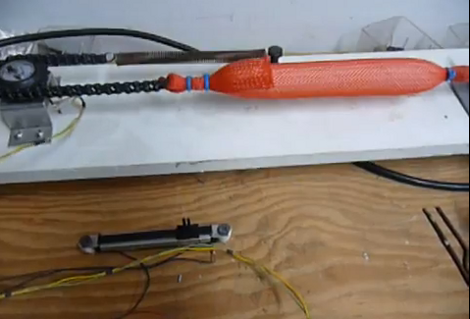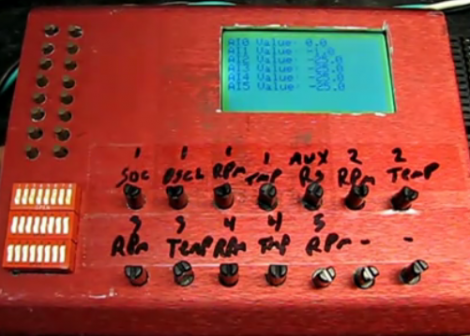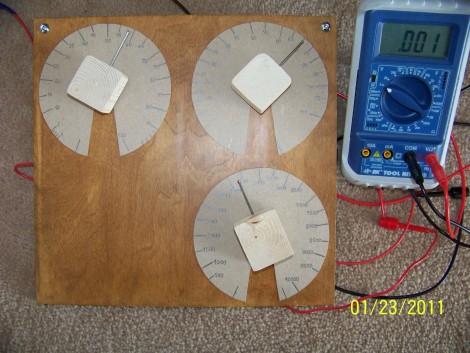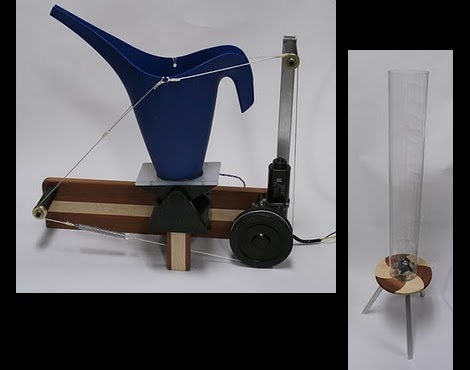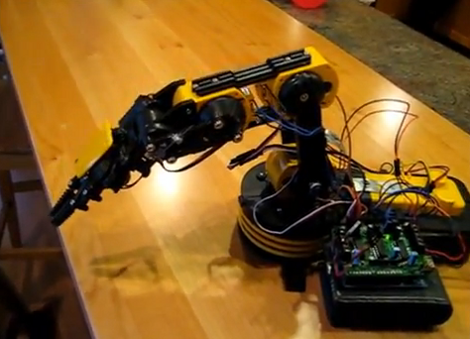
This OWI robot arm has been hacked to add position sensors and Arduino control. [Chris Anderson] took one look at the Launchpad controlled OWI from earlier today and said “wait a minute, I’ve already posted my own version of that project”. Well, that will teach him not to tip us off about his hacks!
The position control is a really nice addition. Potentiometers added to each of the joints (shoulder, elbow, and wrist) can be read by the ADC pins on the Arduino. Just a bit of calibration will let the microcontroller board know the position of the arm at any given time. The control technique is the same as the Launchpad hack, with one glaring drawback. [Chris] is using the Adafruit motor driver shield. It uses L293D H-bridge chips, but it only has four channels. There are five motors on this arm, so the video after the break shows it moving around without any outside instruction, but you won’t see it grab onto anything since the Arduino can’t move the gripper!
Still, the position feedback makes the case for this version. Just remember to order an extra chip if you want full control.
Continue reading “I’ll See Your Launchpad Controlled Arm And Raise You Arduino Controlled Autonomy”

